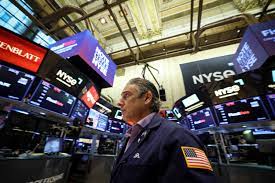Markets Soar as US-China Declare 90-Day Trade Truce: Dow Jumps 1,100 Points, S&P 500 Surges 3.3%
The world’s financial markets celebrated as the United States and China hammered out a 90-day cease-fire in their raging trade war. The news saw the stock markets soar, with the Dow Jones Industrial Average gaining 1,100 points—one of its biggest single-day increases—and the S&P 500 rising 3.3%. For investors, analysts, and regular folks keeping tabs on their 401(k) accounts, this was good news of temporary harmony in what had become an ever-less-predictable trade fight.

A Year of Economic Tension
For more than a year, the world’s two biggest economies, the United States and China, have been embroiled in a bitter trade war. The two nations slapped tariffs on billions of dollars’ worth of goods from each other, disrupting global supply chains.
The US charged China with unfair trade practices, intellectual property theft, and forced technology transfers. The Trump administration retaliated by increasing tariffs on Chinese imports. China hit back with its own tariffs on American goods, especially farm products, which damaged US farmers.
These rising tensions sparked uncertainty in global markets, particularly as concerns over a prolonged trade war intensified. Companies postponed investments, manufacturers grappled with increasing costs, and global growth decelerated.
The Truce: What Was Announced?
At the G20 Summit, held in Buenos Aires, Argentina, US President Donald Trump and Chinese President Xi Jinping held a high-stakes meeting. The outcome? A 90-day pause on any new tariffs. During this period, both sides agreed to continue trade negotiations in hopes of reaching a broader agreement.
Here’s what the truce included:
- No new tariffs for 90 days: Both countries agreed not to implement any additional tariffs during this period.
- Continued dialogue: US and Chinese trade representatives will work toward resolving long-standing issues.
- Potential rollback: If progress is made, there is hope that existing tariffs could be reduced or removed.
This truce doesn’t mean the trade war is over, but it does give both sides time to find a solution and avoid further economic damage.
Market Reaction: Why Stocks Soared
As soon as news of the truce broke, investors responded with overwhelming enthusiasm. Here’s how the markets reacted:
- Dow Jones Industrial Average: Jumped by 1,100 points—a gain of over 4%.
- S&P 500 Index: Rose by 3.3%, reflecting broad-based optimism across various sectors.
- Nasdaq Composite: Also surged, particularly due to gains in tech stocks like Apple, which rely heavily on global supply chains.
But why such a dramatic rise?
- Relief from uncertainty: Markets hate uncertainty. With the truce in place, businesses and investors have a clearer short-term outlook.
- Hope for de-escalation: Investors see the truce as a sign that both sides are willing to negotiate and avoid a full-blown trade war.
- Boost to global growth: Reduced tensions improve the outlook for global trade and economic growth, benefiting multinational companies.
Key Sectors That Benefited
Several sectors saw significant gains due to the news:
- Technology: Companies like Apple, Qualcomm, and Intel rallied as they rely on both Chinese manufacturing and Chinese customers.
- Industrial stocks: Firms like Caterpillar and Boeing, which are sensitive to global trade trends, saw notable increases.
- Automotive: Shares of automakers jumped on hopes that tariffs on cars and parts could be reduced or eliminated.
- Agriculture: Although not immediately impacted, the truce gave hope to farmers that Chinese purchases of soybeans and other goods might resume.
What This Means for Investors
While the market rally is encouraging, investors should remain cautious. A few things to keep in mind:
- It’s a temporary truce: The agreement is only for 90 days. If negotiations fail, tariffs could resume—or even increase.
- Volatility may return: Markets are likely to swing on news of negotiations. Positive headlines will boost markets; negative ones could trigger selloffs.
- Diversification remains key: Regardless of market conditions, maintaining a well-diversified portfolio helps manage risk.
If you’re a long-term investor, this event is a reminder of how political developments can affect markets. However, trying to time the market based on these headlines is risky. Instead, focus on your investment goals and risk tolerance.
What Experts Are Saying
Market analysts and economists have shared mixed reactions:
- Optimists believe this truce is the first step toward a comprehensive trade deal.
- Skeptics warn that major issues remain unresolved and that tensions could quickly reignite.
According to Mohamed El-Erian, chief economic advisor at Allianz, “This pause in escalation is good news for the global economy, but the underlying structural issues will take time to resolve.”
Meanwhile, Goldman Sachs cautioned clients that “while the truce reduces near-term risk, a final resolution remains far from guaranteed.”
Cautious Optimism Ahead
The 1,100-point pop in the Dow and 3.3% increase in the S&P 500 are testament to the relief that markets have at the pause in US-China trade tensions, temporary though it is. Investors have welcomed hope of a breakthrough, but the weeks ahead will prove decisive.
As the negotiators haggle behind closed doors, the world will wait anxiously by. A deal would prolong the rally in the market. Collapse in talks would have volatility stampeding back in.
For the time being, the 90-day cease-fire provides a welcome moment of peace—and a reminder that amid all the tumult, diplomacy counts.
Click here to subscribe to our newsletters and get the latest updates directly to your inbox.

